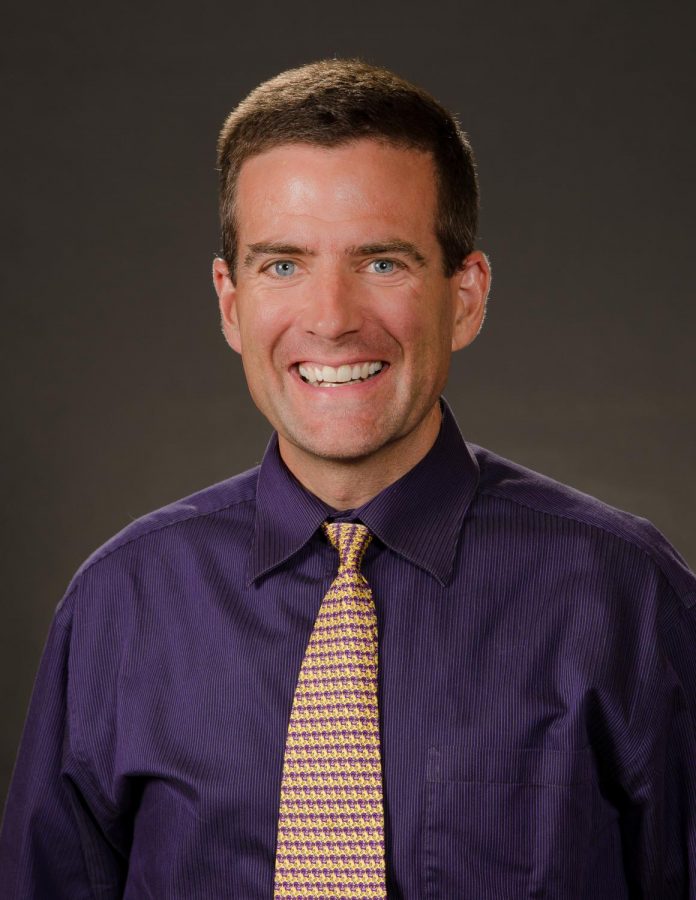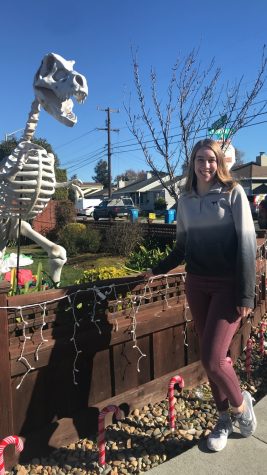Dr. Christopher Swanson: Chair of Mathematics and Computer Science
Department chair spotlight
Dr. Christohpher Swanson, chair of the mathematics and computer science department at AU.
October 3, 2019
The mathematics and computer science department has award-winning math instructors, while offering activities outside of the classroom.
Dr. Christopher Swanson is the chair of mathematics and computer science and is in his first year as chair. He said that this department’s mission is to educate students in the areas of mathematics and computer science.
“The department is committed to providing students with a broad overview of the central concepts of mathematics, computer science and logic,” Swanson said. “The mathematics and computer science curricula are supported by the foundation of liberal arts education.”
There are six majors within this department: mathematics, integrated mathematics, actuarial science, computer science, cyber security and software design and development, with the last two new to this year. Their minors include mathematics, computer science, cyber security and web technology.
This department and the philosophy department offer the courses that meet the Math/Logic core curriculum requirement. As many may guess, Math 208: Elementary Statistics is the most popular course taken to fulfill the requirement.
While internships are not required, they are encouraged. Recent computer science majors have interned at First Energy, J.M. Smucker and Bird Technologies. Actuarial science majors have interned at Western Reserve Group, Westfield Insurance and Findley-Davies.
According to the department’s website, the history of the mathematics department starts in the fall of 1879, when Ashland University was called Ashland College. The total faculty of the college consisted of eight members and 75 students. David Bailey, M.A., was the first instructor in mathematics.
“The first college catalogue lists two, four-year degree programs, the classical and the philosophical,” Swanson said.
The mathematics courses offered during the initial years of the college were: geometry (one quarter), higher algebra (two quarters), trigonometry and surveying (one quarter), spherical trigonometry and navigation (one quarter), general geometry (one quarter), calculus (two quarters), mechanics (one quarter) and astronomy (one quarter). All of these courses, except mechanics and astronomy, were required for students in both four-year programs.
When liberal arts first started at AU, there were seven liberal arts programs: grammar, rhetoric, logic, arithmetic, geometry, astronomy and music. The latter four known as the quadrivium, were all mathematical in nature and logic is also important for the study of mathematics, Swanson said.
Swanson grew up in the Massillon/Canton area and graduated from Massillon Perry high school in 1990. He received his Bachelor of Science from Denison University in 1994 with a major in mathematics and a minor in physics, his Masters of Science in mathematics from the University of Michigan in 1996 and his Doctor of Philosophy in mathematics from the University of Michigan in 1999.
“Having had both the small, private, liberal arts college and large research university experience, I knew that I wanted to return to a small, private liberal arts college when I completed my PhD,” Swanson said. “Furthermore, with my wife being from Indiana and with me being from Ohio, I was hoping to end up at a college in the midwest.”
Students in this major also have opportunities to get together outside of classes.
Computer science related majors participate in the Association of Computing Machinery, Upsilon Pi Epsilon and regional programming competitions. Mathematics related majors participate in the student math club, Pi Mu Epsilon, the Problem Solving Group, mathematics competitions and give presentations at professional conferences.
The award-winning professors in the mathematics and computer science start with “Dr. Gordon Swain winning the Ashland University Taylor Excellence in Teaching Award in 2001 and the Ohio Section of the Mathematical Association of America Award for Distinguished College or University Teaching of Mathematics in 2019,” Swanson said.
Swanson won the national Mathematical Association of America’s Henry L. Alder Award in 2006 and the Ohio Section of the Mathematical Association of America Award for Distinguished College or University Teaching of Mathematics in 2014.
“From a more practical perspective, mathematics and computer science majors lead to top jobs,” Swanson said. “CareerCast.com publishes an annual jobs rated report. In the 2019 report (https://www.careercast.com/jobs-rated/2019-jobs-rated-report), seven of the top eleven jobs are related to mathematics or computer science – #1 Data Scientist; #2 Statistician; #7 Information Security Analyst; #8 Mathematician; #9 Operations Research Analyst; #10 Actuary; #11 Software Developer. (University professor is ranked #3, another option for mathematics and computer science majors to consider.)”
Students who have questions can email Swanson at [email protected].



